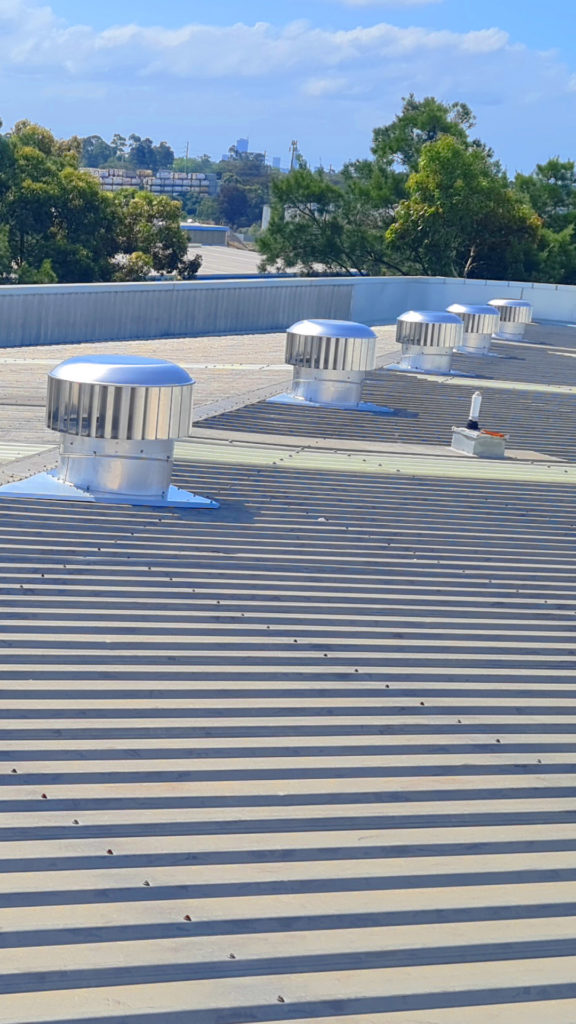Maximizing Returns: Exploring the ROI of Industrial Roof Ventilation
Introduction
In the world of industrial facilities and manufacturing plants, the importance of maintaining a comfortable and efficient working environment cannot be overstated. One crucial aspect of achieving this goal is industrial roof ventilation. While it may not be the first thing that comes to mind when considering investments in a facility, industrial roof ventilation systems play a pivotal role in enhancing productivity, ensuring the safety of workers, and ultimately, providing a significant return on investment (ROI).
In this article, we will delve into the various factors that contribute to the ROI of industrial roof ventilation systems. From energy savings to improved worker health and productivity, the benefits of proper ventilation extend far beyond simple air circulation.
- Energy Efficiency
One of the primary drivers of ROI in industrial roof ventilation is energy efficiency. Industrial facilities often require extensive heating, cooling, and ventilation systems to maintain the desired working conditions. Without an efficient ventilation system, these facilities can experience temperature extremes that necessitate excessive heating or cooling.
Properly designed industrial roof ventilation systems can help balance indoor temperatures, reducing the reliance on mechanical heating and cooling systems. In the long run, this translates to substantial energy savings. Moreover, by optimizing temperature control, industrial facilities can reduce their carbon footprint, aligning with the growing emphasis on sustainability and environmental responsibility.
- Enhanced Productivity
A comfortable working environment is vital for employee productivity. Inadequate ventilation can result in uncomfortable conditions, leading to reduced worker output and increased absenteeism due to discomfort-related illnesses. Studies have consistently shown that well-ventilated spaces lead to better concentration, alertness, and overall job satisfaction among employees.
Improved air quality is another essential aspect of industrial roof ventilation. It helps reduce the concentration of airborne pollutants, such as dust, fumes, and chemical vapors. This, in turn, safeguards workers from health hazards associated with inhaling these pollutants, leading to a healthier and more productive workforce.
- Health and Safety Compliance
Investing in industrial roof ventilation isn’t just about improving productivity; it’s also about ensuring the safety and well-being of employees. Industrial environments often harbor a variety of potentially harmful substances, such as volatile chemicals, fumes, and dust. Proper ventilation helps mitigate these hazards by removing pollutants from the air, reducing the risk of respiratory problems and occupational illnesses.
Additionally, regulatory bodies impose strict health and safety standards on industrial facilities. Failing to meet these standards can result in costly fines and legal liabilities. By installing effective roof ventilation systems, industrial facilities can demonstrate their commitment to employee safety and compliance with regulations, ultimately avoiding legal repercussions and potential damage to their reputation.
- Extended Equipment Lifespan
Industrial equipment is a substantial investment, and its longevity is a critical consideration for any facility manager. High temperatures and poor ventilation can accelerate wear and tear on machinery, leading to frequent breakdowns and costly repairs or replacements. In contrast, proper ventilation systems help maintain optimal operating temperatures for equipment, prolonging their lifespan and reducing maintenance expenses.
The ROI in this context is not limited to immediate cost savings but also includes the avoidance of unexpected downtime and disruptions in production. By safeguarding equipment health, industrial roof ventilation systems contribute to uninterrupted operations and increased production efficiency.
- Reduced Roofing Maintenance Costs
Industrial roofs face unique challenges, including exposure to extreme weather conditions and the accumulation of debris. Without adequate ventilation, moisture buildup under the roof can lead to corrosion, mold growth, and structural damage. By promoting proper airflow, industrial roof ventilation systems help mitigate these issues, reducing the need for frequent roof repairs and replacements.
Moreover, well-ventilated roofs are less prone to ice dam formation during winter, further reducing the risk of water damage. The long-term cost savings from reduced roofing maintenance can be substantial, making industrial roof ventilation an excellent investment.
Conclusion
Industrial roof ventilation systems may not always be the first consideration when upgrading or maintaining a facility. Still, their importance cannot be overstated when it comes to achieving a significant return on investment. From energy savings and improved productivity to health and safety compliance, the benefits of these systems extend to various aspects of an industrial operation.
When evaluating the ROI of industrial roof ventilation, it’s essential to consider the long-term benefits and cost savings that extend well beyond the initial installation. Investing in the comfort, health, and safety of your workforce, as well as the preservation of equipment and roofing structures, pays off not only in terms of dollars saved but also in the sustainability and competitiveness of your industrial facility. In the end, a well-ventilated facility is not just a wise financial decision; it’s a testament to your commitment to the well-being of your employees and the future of your business.

